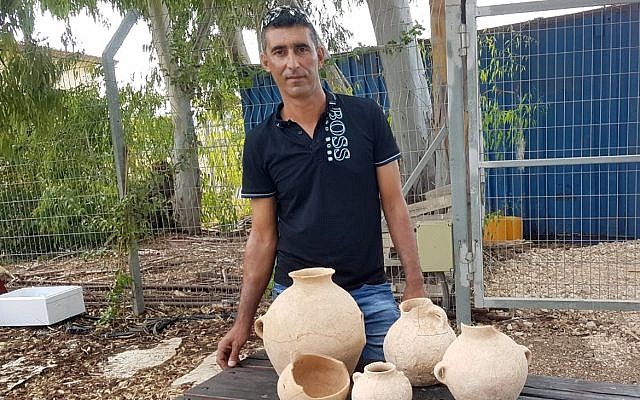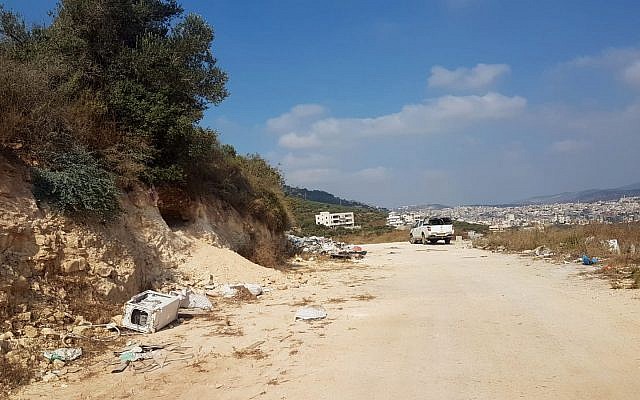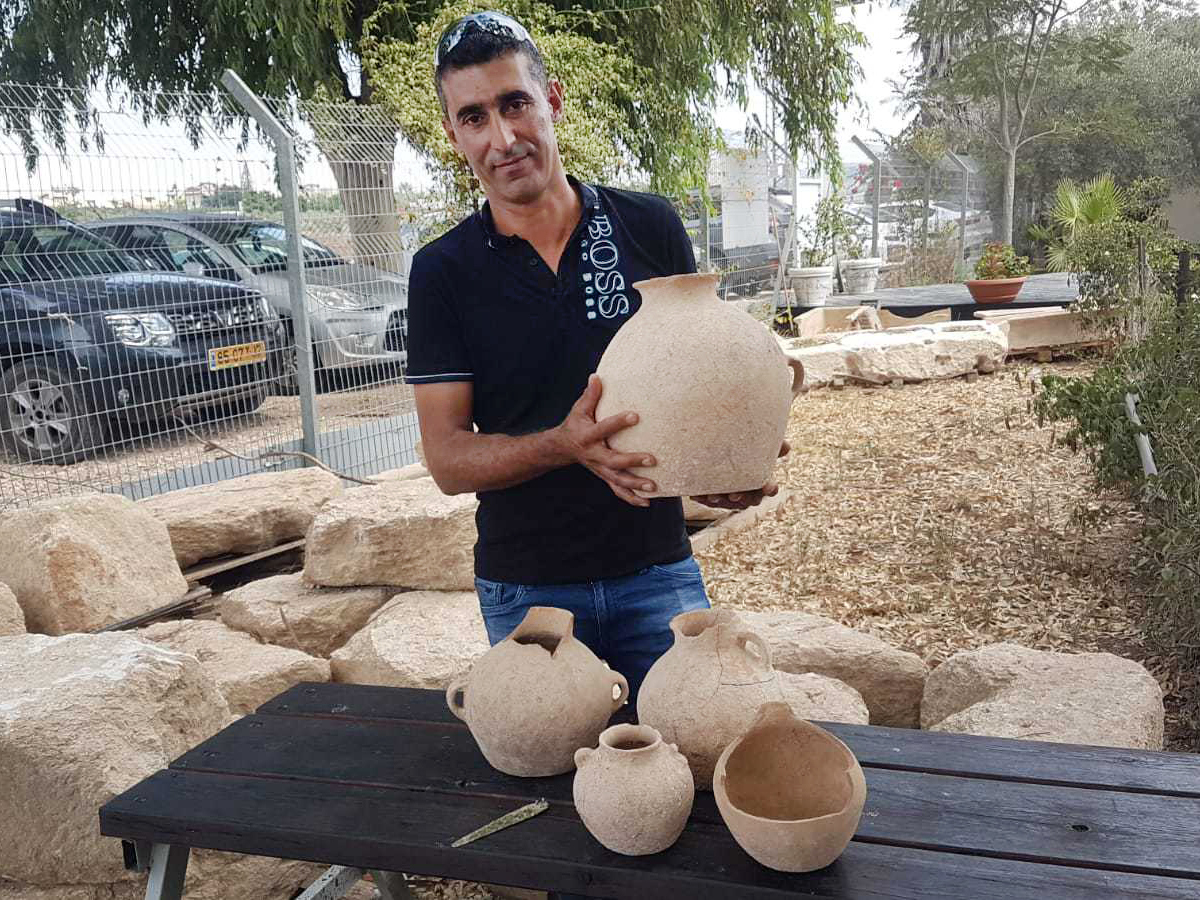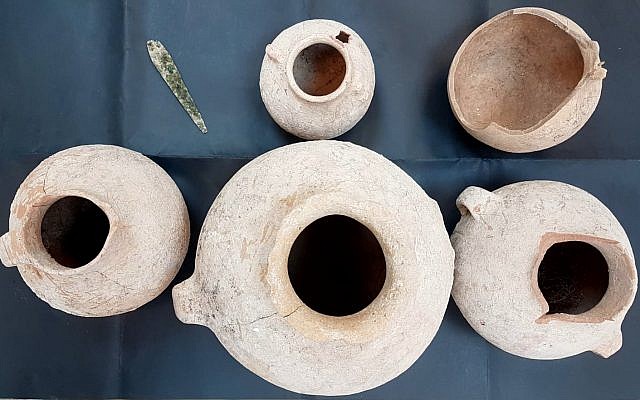Ahmad Nassar Yassin, a resident of the northern Israel village of Araba, discovers remains of a previously unknown Canaanite-era settlement

A previously unknown center of Canaanite-era settlement was recently stumbled upon by a curious electrician on his way to work. A 4,500-year-old copper dagger blade and a collection of intact pottery containers were discovered by Ahmad Nassar Yassin, a resident of the northern Israel village of Araba, who noted something out of the ordinary while he was driving to service a local customer.
“When I identified something unusual on the mountain ridge close to the dirt road, I stopped to check it out. The minute I touch the boulder it crumbled and, in front of my eyes, ancient-looking containers appeared,” said Yassin.
In conversation with The Times of Israel on Wednesday, Distelfeld commended Yassin’s reporting of the ancient artifacts to the IAA and said he hoped it would spur more cooperation with Arab communities, which are not aware enough of IAA’s work in preserving the heritage of all cultures and civilizations who settled in the Levant.
Yassin’s finds point to a previously unknown settlement in the specific area, said Distelfeld. There are many known settlements in the Western Galilee area, but in Araba no one had yet discovered habitation of the village dating back to 2,500 BCE.
“The burial cave discovered by Ahmed by chance has revealed to us a previously unknown period for the research of this area, and in his conscientious decision [to report the finds] he has contributed to the archaeological puzzle of the Land of Israel,” said Distelfeld in the IAA’s press release.

Since there is frequent construction in Araba, Distelfeld told The Times of Israel, the IAA will perform a new survey of the area based on Yassin’s discovery of the burial cave and send more inspectors to the field to supervise while roadworks are taking place.
The burial cave itself, said Distelfeld, is destroyed and no further excavation is planned. Distelfeld has offered the ancient items to the village municipality to put on display, but has not yet received a response. In the meantime, the items will be held by the state.
In terms of his motivations for reporting the find, Yassin said in an IAA video that from the first second he laid eyes on the pottery, he understood he was dealing with historical artifacts.
“I passed them on to the people who could properly treat them. I’m hopeful that people will begin to understand that one day, everything that is discovered and everything that we’ll learn from historical artifacts, will serve all peoples, from all backgrounds,” said Yassin.

As reported by The Times of Israel

